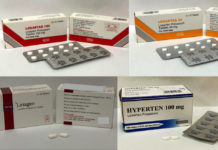
Recently, I have been asked repeatedly why some celebrities look so radiant, while others seem to have an oily complexion on television at award ceremonies. “Don’t they have make-up to cover up the shine before they go onstage?”
The simple answer is: it is precisely the make-up which is contributing to the oil and shine!
The Quest for Glowing Skin
You may have noticed in recent years that there is an emphasis on glowing skin. Healthy, youthful skin has an even tone, is plump, and hydrated. Aged skin, on the other hand is dull in tone and rough in texture. The Koreans seem to have perfected the art of radiant skin, giving us the “glass skin” which everyone is obsessed about.
The Importance of Light Reflection
Whether skin looks radiant or dull depends very much on how the light bounces off it. When the skin is smooth and free of pigmentation, light will reflect off the skin better. Conversely, when the skin surface is rough with scars and open pores, and plagued with dark patches from pigmentation, light gets absorbed instead of bouncing off, and what we see is dull skin. For this reason, we try to cover pigmentation with makeup, and smooth out the skin surface with foundation.

The make-up industry understands this, and now adds substances such as glycerin, hyaluronic acid, and even diamond powder to foundations and other products to improve skin glow.
While these products allow us to look good on a day to day basis, there is a problem when celebrities wear too much of it and go on television, especially at Award Ceremonies. the lighting can be harsh and direct, causing too much light to reflect off the surface. Most TV stars already have good skin, and therefore with the extra glow from makeup, coupled with unflattering lighting, it can tip them over and made them look shiny and oily instead of radiant.
A Thin Line Between Radiant and Shiny

It has been scientifically proven that we find radiant skin more attractive than matte or shiny skin (1). In a very interesting Japanese study, 160 females in their 30s and 40s where shown successive pictures of faces with matte, oily-shiny, then radiant skin, and asked to judge which they found were more attractive. The researchers even used MRI imaging to determine which parts of respondents’ brains were more active when shown the different skin complexions.
The results were as you guessed: radiant skin was rated the most attractive, followed by oily-shiny, followed by matte(which is very interesting, considering that just some years ago, we were trying to achieve matte skin with makeup). Activation of the orbitofrontal cortex (mOFC), was also noted more when respondents were shown radiant skin. mOFC activity increases when we are exposed to someone who we find attractive.
Researchers described radiant skin as exhibiting “high specular and high diffuse reflectances” and oily-shiny skin as showing “high specular and low diffuse reflectances” (whuuut?!). In layman terms, the 2 area really very similar, except for the way the light bounces off. How diffuse the light reflects determines our perception of whether the skin is radiant or shiny. It is really a very thin line.
And sadly, that line can easily be crossed when our favourite celebrities go on stage, and television, causing their usually radiant complexion to look unusually shiny and oily.
References
- Sakano, Y., Wada, A., Ikeda, H. et al. Human brain activity reflecting facial attractiveness from skin reflection. Sci Rep11, 3412 (2021). https://doi.org/10.1038/s41598-021-82601-w

















